文章
Dummer. ゛☀
2017年08月04日

Orchids belong to one of the largest plant families. There are almost 30,000 species of orchids, though most gardeners will likely only grow a handful of species commonly sold at garden and home improvement centers. These types are popular because they survive—and even thrive—within a typical home environment. The biggest tip for being a successful orchid grower is simply to not be afraid. They look exotic and fussy, but most orchids really aren’t. You can grow beautiful orchids at home. Here’s how.

How to Choose the Right Orchid for your Growing Conditions
Most likely you’ll be growing one of a handful of orchids that are easy to find for sale. Phalaenopsis, sometimes called “moth orchid,” is the easiest to grow and what you find for sale at the grocery store. It likes low light and humid (but not stagnant) air. An east window is perfect for these plants. Other types of common orchids, such as oncidium, dendrobium, vanda, and cattleya, need more light and will thrive in a bright east window or west window as long as the sun is not shining directly on the plants. Select an orchid type that will thrive in the light conditions you can offer. You’ll also want to make sure the room temperature is between 65° and 80°F, as orchids are tropical plants that require a warm environment.

How to Water Orchids
Orchids grow best with consistent moisture. For home gardeners this translates to watering once or twice per week by holding the pot under the faucet and allowing the potting mix to be thoroughly soaked by lukewarm water. Take care not to let water sit in the leaves, as this can cause disease problems.

How to Make Orchids Rebloom
This is one of the biggest mysteries to new orchid growers! First, cut back the flower stalk to the first leaf after the plant blooms. Some orchid varieties will rebloom on the same stalk, while others will sprout a secondary bloom stalk at the end of the main stalk. Some plants take up to a year to grow a new flower stalk and rebloom. Many orchids respond to a period of cooler night temperatures in the fall. Try setting your plants outside as nighttime temperatures drop to fifty degrees overnight. Leave plants outside for a few weeks, and then bring in and resume fertilizing. Be patient. Your orchids will bloom again!
How to Help Prevent Orchid Pests
Good care goes a long way toward keeping pests and diseases from killing the plants or destroying the blooms. One additional thing you can do is to improve air circulation by placing a small house fan in the room where you grow orchids and setting it to rotate on the low setting. This will help keep bacterial and fungal pests at bay.

How to Choose the Right Orchid for your Growing Conditions
Most likely you’ll be growing one of a handful of orchids that are easy to find for sale. Phalaenopsis, sometimes called “moth orchid,” is the easiest to grow and what you find for sale at the grocery store. It likes low light and humid (but not stagnant) air. An east window is perfect for these plants. Other types of common orchids, such as oncidium, dendrobium, vanda, and cattleya, need more light and will thrive in a bright east window or west window as long as the sun is not shining directly on the plants. Select an orchid type that will thrive in the light conditions you can offer. You’ll also want to make sure the room temperature is between 65° and 80°F, as orchids are tropical plants that require a warm environment.

How to Water Orchids
Orchids grow best with consistent moisture. For home gardeners this translates to watering once or twice per week by holding the pot under the faucet and allowing the potting mix to be thoroughly soaked by lukewarm water. Take care not to let water sit in the leaves, as this can cause disease problems.

How to Make Orchids Rebloom
This is one of the biggest mysteries to new orchid growers! First, cut back the flower stalk to the first leaf after the plant blooms. Some orchid varieties will rebloom on the same stalk, while others will sprout a secondary bloom stalk at the end of the main stalk. Some plants take up to a year to grow a new flower stalk and rebloom. Many orchids respond to a period of cooler night temperatures in the fall. Try setting your plants outside as nighttime temperatures drop to fifty degrees overnight. Leave plants outside for a few weeks, and then bring in and resume fertilizing. Be patient. Your orchids will bloom again!
How to Help Prevent Orchid Pests
Good care goes a long way toward keeping pests and diseases from killing the plants or destroying the blooms. One additional thing you can do is to improve air circulation by placing a small house fan in the room where you grow orchids and setting it to rotate on the low setting. This will help keep bacterial and fungal pests at bay.
1
1
文章
Dummer. ゛☀
2017年08月02日

Flowering - April - June.
Habitat - North and East-facing slopes of ravines, mesic, upland woods.
Origin - Native to U.S., Europe, and Asia.
Other info. - This showy and striking species can be found throughout Missouri. The plant is just one of a larger complex of plants which occur in Europe, Asia, and North America. At present, two varieties are recognized in Missouri. Variety parviflorum (Salisb.) Fernald has a corolla lip 2-3cm long, and 4-6 leaves per flowering stem. Variety pubescens (Willd.) Correll has a corolla lip 3-6cm long and 3-4 leaves per flowering stem. Both varieties are commonly scattered throughout the state. A rare white form of var. parviflorum has been collected in Missouri in a couple of southern counties.
Due to its beauty, the plant has been dug for gardening use and the species has declined in the wild. The roots are also collected for medicinal use. The plant was used traditionally to remedy headaches, hysteria, insomnia, depression, and menstrual irregularities.
It would be a shame to see this species decline more in the wild because of harvesting. Plants will grow from seed and pods can be easily collected in the late summer.
Habitat - North and East-facing slopes of ravines, mesic, upland woods.
Origin - Native to U.S., Europe, and Asia.
Other info. - This showy and striking species can be found throughout Missouri. The plant is just one of a larger complex of plants which occur in Europe, Asia, and North America. At present, two varieties are recognized in Missouri. Variety parviflorum (Salisb.) Fernald has a corolla lip 2-3cm long, and 4-6 leaves per flowering stem. Variety pubescens (Willd.) Correll has a corolla lip 3-6cm long and 3-4 leaves per flowering stem. Both varieties are commonly scattered throughout the state. A rare white form of var. parviflorum has been collected in Missouri in a couple of southern counties.

Due to its beauty, the plant has been dug for gardening use and the species has declined in the wild. The roots are also collected for medicinal use. The plant was used traditionally to remedy headaches, hysteria, insomnia, depression, and menstrual irregularities.

It would be a shame to see this species decline more in the wild because of harvesting. Plants will grow from seed and pods can be easily collected in the late summer.
0
0
求助
Ueca
2017年07月27日

What are the species of these succulents? Most of them must be Echeverias but finding the species name is the hardest thing ever.
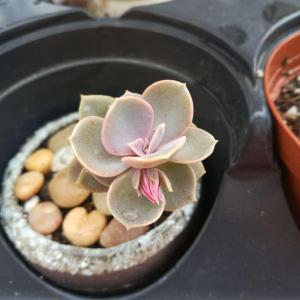
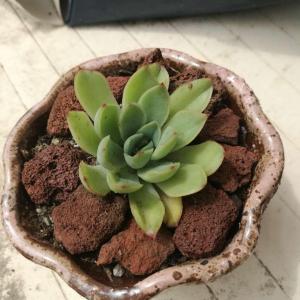
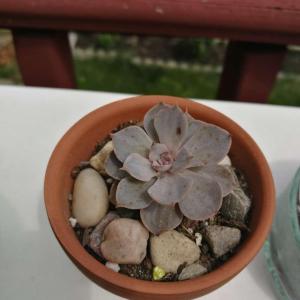
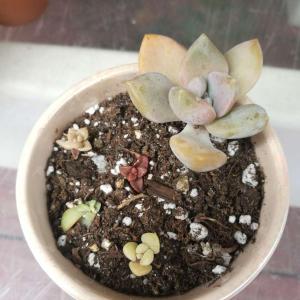
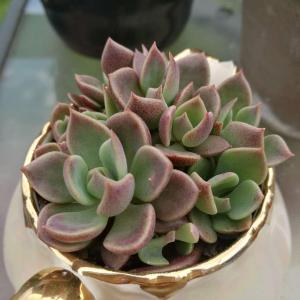
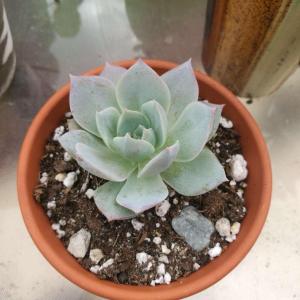
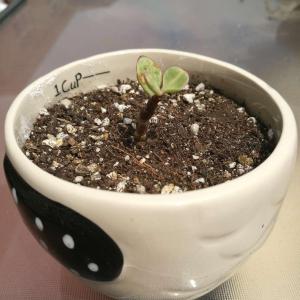
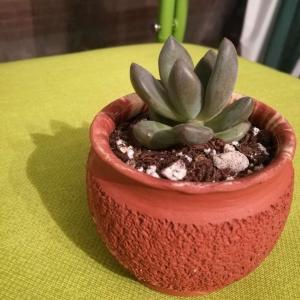
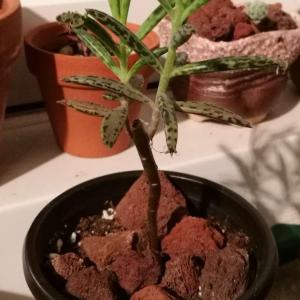









2
1
meriunkat:the last one on the first row to the left looks like portuluca afra "Elephant Bush"
meriunkat:the last one on the second row to the right looks like Echeveria Lola
meriunkat:I have one like that last one on the bottom right corner.. don't know the name either
meriunkat:I'm pretty sure the first one is also a Perle Von Nurnberg, I have one that is growing new leaves and they look like that
meriunkat:@sarajordan2993 I know home Depot and Lowe's do put name tags
显示更多
文章
Dummer. ゛☀
2017年07月17日

Family - Rosaceae.
Flowering - April - June.
Habitat - Open woods, bluffs, thickets.
Origin - Native to U.S.
Other info. - This attractive and tasty species can be found throughout Missouri. The plant is commonly cultivated and many horticultural varieties exist. It is commonly called Black Raspberry.
R. occidentalis is easy to identify becasue of its very glaucous stems and typically 5-parted leaves. The fruits ripen at different rates and make attractive infructescences. The abaxial surface of the leaves are very whitish.

Flowering - April - June.
Habitat - Open woods, bluffs, thickets.

Origin - Native to U.S.
Other info. - This attractive and tasty species can be found throughout Missouri. The plant is commonly cultivated and many horticultural varieties exist. It is commonly called Black Raspberry.

R. occidentalis is easy to identify becasue of its very glaucous stems and typically 5-parted leaves. The fruits ripen at different rates and make attractive infructescences. The abaxial surface of the leaves are very whitish.
0
0
文章
Dummer. ゛☀
2017年07月17日

Family - Rosaceae.
Flowering - April - June.
Habitat - Low wet woods, open woods, fence rows, thickets, roadsides, pastures.
Origin - Native to U.S.
Other info. - This blackberry species can be found in the southern half of Missouri and is mainly concentrated in the southeast and southwest corners of the state. The plant grows to +2m tall.
The leaves of the flowering canes have three leaflets. The leaflets are soft-pubescent abaxially. The lateral leaflets have very short (-2mm) to absent petiolules. The rachis of the inflorescence is densely pubescent in this species.
The fruits of R. argutus are fairly small and don't taste as good as other members of the genus.

Flowering - April - June.
Habitat - Low wet woods, open woods, fence rows, thickets, roadsides, pastures.

Origin - Native to U.S.
Other info. - This blackberry species can be found in the southern half of Missouri and is mainly concentrated in the southeast and southwest corners of the state. The plant grows to +2m tall.

The leaves of the flowering canes have three leaflets. The leaflets are soft-pubescent abaxially. The lateral leaflets have very short (-2mm) to absent petiolules. The rachis of the inflorescence is densely pubescent in this species.
The fruits of R. argutus are fairly small and don't taste as good as other members of the genus.
0
0
文章
Dummer. ゛☀
2017年07月17日

Family - Grossulariaceae.
Flowering - April - May.
Habitat - Rocky woods, open dry woods, thickets, upland and lowland borders of woods, previously grazed areas, previously clear-cut areas.
Origin - Native to U.S.
Other info. - This popular species can be found throughout Missouri but is apparently absent from the bootheel counties of the state. It is the most common species of Ribes in the state. The plant can be identified by its white flowers, lobed leaves, and spined nodes of the stem.
The plant has been cultivated widely for its edible fruits.

Flowering - April - May.
Habitat - Rocky woods, open dry woods, thickets, upland and lowland borders of woods, previously grazed areas, previously clear-cut areas.

Origin - Native to U.S.
Other info. - This popular species can be found throughout Missouri but is apparently absent from the bootheel counties of the state. It is the most common species of Ribes in the state. The plant can be identified by its white flowers, lobed leaves, and spined nodes of the stem.

The plant has been cultivated widely for its edible fruits.
0
0
文章
Dummer. ゛☀
2017年07月17日

Family - Apiaceae.
Flowering - June - August.
Habitat - Moist to wet open ground.
Origin - Native to U.S.
Other info. - This little species can be found in only a handful of southeastern Missouri counties. The plant is very infrequent in the state and appears to reach the northwest corner of its range here.

This species can be distinguished from the two other species of Ptilimnium in the state by its very short styles and divided bracts, which subtend the primary rays of the inflorescence.

Flowering - June - August.
Habitat - Moist to wet open ground.
Origin - Native to U.S.
Other info. - This little species can be found in only a handful of southeastern Missouri counties. The plant is very infrequent in the state and appears to reach the northwest corner of its range here.


This species can be distinguished from the two other species of Ptilimnium in the state by its very short styles and divided bracts, which subtend the primary rays of the inflorescence.
0
0
文章
Dummer. ゛☀
2017年07月17日

Family - Polygonaceae.

Flowering - August - October.
Habitat - Low wet woods and swamps.
Origin - Native to the Southeastern U.S. and Central and South America.
Other info. - This robust species can be found in a few counties of extreme Southeastern Missouri. The plant likes wet conditions. P. densiflorum can be identified in the field by its habitat, large leaves, robust stems (which root at the nodes), and its dense flower clusters. In warmer climates the plant can form large colonies by means of stolons and rhizomes.


Flowering - August - October.
Habitat - Low wet woods and swamps.
Origin - Native to the Southeastern U.S. and Central and South America.

Other info. - This robust species can be found in a few counties of extreme Southeastern Missouri. The plant likes wet conditions. P. densiflorum can be identified in the field by its habitat, large leaves, robust stems (which root at the nodes), and its dense flower clusters. In warmer climates the plant can form large colonies by means of stolons and rhizomes.
0
0
文章
Dummer. ゛☀
2017年07月17日

Family - Polygonaceae.

Flowering - August - September.
Habitat - Waste ground, fence rows, roadsides, railroads.
Origin - Native to Japan.
Other info. - This large, showy species can be found scattered throughout Missouri but is still mostly uncommon. It will most certainly spread with time. The plant is quite large and bushy, growing to +4m tall. It makes a good cultivated specimen but is hard to keep under control. When left undisturbed it spreads rapidly. The sprays of white flowers attract many insects.
P. cuspidatum is considered a noxious weeds in many parts of the U.S.


Flowering - August - September.
Habitat - Waste ground, fence rows, roadsides, railroads.
Origin - Native to Japan.
Other info. - This large, showy species can be found scattered throughout Missouri but is still mostly uncommon. It will most certainly spread with time. The plant is quite large and bushy, growing to +4m tall. It makes a good cultivated specimen but is hard to keep under control. When left undisturbed it spreads rapidly. The sprays of white flowers attract many insects.

P. cuspidatum is considered a noxious weeds in many parts of the U.S.
0
0
文章
Dummer. ゛☀
2017年07月17日

Family - Asteraceae.
Flowering - May - October.
Habitat - Limestone glades, bald knobs, rocky prairies.
Origin - Native to U.S.
Other info. - This species can be found in the Ozark region of Missouri. It is a characteristic glade species.

Another species, P. integrifolium L., is more common in the state and is a larger plant. The two species are quite similar and, with further study, may prove to be little more than varieties rather than distinct species.

Flowering - May - October.
Habitat - Limestone glades, bald knobs, rocky prairies.
Origin - Native to U.S.
Other info. - This species can be found in the Ozark region of Missouri. It is a characteristic glade species.


Another species, P. integrifolium L., is more common in the state and is a larger plant. The two species are quite similar and, with further study, may prove to be little more than varieties rather than distinct species.
0
0
文章
Dummer. ゛☀
2017年07月17日

Family - Saxifragaceae.

Flowering - August - October.
Habitat - Fens, base of limestone bluffs.Origin - Native to U.S.Other info. - This species can be found in the Ozark Region of Missouri. It is easily identified by its basal leaves and large white flowers. No other plant in the state resembles Parnassia. The species is more common in the eastern U.S.
The common name of this species is "Grass-of-Parnassus." This makes little sense as the plant does not resemble a grass in any way. The Latin name makes much more sense as it describes the large, bright flowers.


Flowering - August - October.
Habitat - Fens, base of limestone bluffs.Origin - Native to U.S.Other info. - This species can be found in the Ozark Region of Missouri. It is easily identified by its basal leaves and large white flowers. No other plant in the state resembles Parnassia. The species is more common in the eastern U.S.
The common name of this species is "Grass-of-Parnassus." This makes little sense as the plant does not resemble a grass in any way. The Latin name makes much more sense as it describes the large, bright flowers.

1
0
文章
Dummer. ゛☀
2017年07月17日

Flowering - July - September.
Habitat - Wet soils along streams, fens, wet prairies, moist bluffs, swamps.

Origin - Native to U.S.
Other info. - This species can be found mainly in the Ozark region of Missouri but is found in a few northern counties also. The plant can be identified in the field by its glabrous and glaucous stems, compound umbels and its mostly entire leaflets. If the leaflets have teeth, then the teeth are few, coarse, and in the apical 1/2 of the leaf. Another species, Sium suave Walt., is similar but has larger leaflets with many-toothed margins. This latter species is found scattered throughout the state and grows in much the same habitats.
Habitat - Wet soils along streams, fens, wet prairies, moist bluffs, swamps.


Origin - Native to U.S.
Other info. - This species can be found mainly in the Ozark region of Missouri but is found in a few northern counties also. The plant can be identified in the field by its glabrous and glaucous stems, compound umbels and its mostly entire leaflets. If the leaflets have teeth, then the teeth are few, coarse, and in the apical 1/2 of the leaf. Another species, Sium suave Walt., is similar but has larger leaflets with many-toothed margins. This latter species is found scattered throughout the state and grows in much the same habitats.

0
0
文章
Dummer. ゛☀
2017年07月16日

Family - Nymphaeaceae
Flowering - May - September.
Habitat - Ponds and sloughs.

Origin - Native to U.S.
Other info. - This striking species can be found scattered throughout Missouri. The plant is common in many ponds and lakes throughout the eastern and central U.S.
N. odorata has pleasantly fragrant flowers and makes a great plant in home fish ponds. The plant is widely cultivated and many flower colors exist. White is the typical flower color.
Traditionally the plant was used by natives to treat a variety of ailments. A tea made from the roots was used for coughs, mouth sores, and for tuberculosis.
The starchy roots are eaten by wildlife.
Flowering - May - September.
Habitat - Ponds and sloughs.


Origin - Native to U.S.
Other info. - This striking species can be found scattered throughout Missouri. The plant is common in many ponds and lakes throughout the eastern and central U.S.
N. odorata has pleasantly fragrant flowers and makes a great plant in home fish ponds. The plant is widely cultivated and many flower colors exist. White is the typical flower color.

Traditionally the plant was used by natives to treat a variety of ailments. A tea made from the roots was used for coughs, mouth sores, and for tuberculosis.
The starchy roots are eaten by wildlife.
0
0
文章
Dummer. ゛☀
2017年07月16日

Family - Saxifragaceae
Flowering - March - June.

Habitat - North-facing limestone slopes, sandstone bluffs, mossy pockets, moist ledges, humus-covered talus.
Origin - Native to U.S.
Other info. - This attractive little species can be found in a handful of scattered locations mostly in the eastern half of Missouri. The plant can be identified by its pubescent stems, maple-leaf shaped leaves, opposite inflorescence bracts, and fimbriate perianth parts. When not in flower the plant can easily be overlooked or mistaken for a species of Heuchera, which it frequently grows in association with. This plant is fairly uncommon over its entire range because of its selective habitat.
Flowering - March - June.


Habitat - North-facing limestone slopes, sandstone bluffs, mossy pockets, moist ledges, humus-covered talus.
Origin - Native to U.S.
Other info. - This attractive little species can be found in a handful of scattered locations mostly in the eastern half of Missouri. The plant can be identified by its pubescent stems, maple-leaf shaped leaves, opposite inflorescence bracts, and fimbriate perianth parts. When not in flower the plant can easily be overlooked or mistaken for a species of Heuchera, which it frequently grows in association with. This plant is fairly uncommon over its entire range because of its selective habitat.

0
0
文章
Dummer. ゛☀
2017年07月16日

Family - Ericaceae
Flowering - May - June.
Habitat - Sandy pine-oak woods.
Origin - Native to U.S.
Other info. - This attractive, shrubby species is very rare in Missouri and can only be found in one Ozark county. The plant reaches the westernmost portion of its range in Missouri, Texas, Oklahoma, and Arkansas. It is much more common in the eastern U.S.
L. mariana is easy to identify in flower because of its large, tubular, white flowers which hang in groups. The leaves of the plant have been reported as being toxic.
Flowering - May - June.

Habitat - Sandy pine-oak woods.

Origin - Native to U.S.
Other info. - This attractive, shrubby species is very rare in Missouri and can only be found in one Ozark county. The plant reaches the westernmost portion of its range in Missouri, Texas, Oklahoma, and Arkansas. It is much more common in the eastern U.S.
L. mariana is easy to identify in flower because of its large, tubular, white flowers which hang in groups. The leaves of the plant have been reported as being toxic.

0
0




